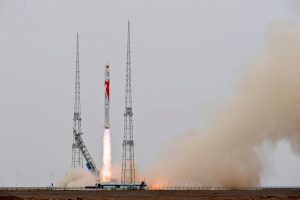ESA TRUTHS Mission to Provide Reliable Climate Data for Policymakers
5th Dec 2023
Representatives from around 200 nations worldwide are at the UN COP28 conference in Dubai to evaluate their efforts to address the urgent issue of climate change. Satellites are crucial in understanding and tracking climate change, and ESA has granted Airbus a contract to advance its TRUTHS satellite mission.
TRUTHS aims to establish the standard for climate measurements, providing policymakers with greater assurance in the accuracy of the data they depend on to combat climate change.
TRUTHS Mission to Ensure Reliable Satellite Data
ESA is taking several measures to ensure the reliability of satellite data through its Earth Watch Program. The Traceable Radiometry Underpinning Terrestrial- and Helio-Studies (TRUTHS) mission is a new part of the program and aims to eliminate any doubts about the accuracy of measurements. ESA is developing TRUTHS on behalf of six member states, namely, the UK, Czechia, Switzerland, Romania, Spain, and Greece.
Climate modeling scientists will have access to high-precision Earth radiation data through this satellite mission. This will be achieved through traceable measurements of incoming solar radiation as well as of radiation reflected from Earth back into space using the International System of Units.
Setting References for Measuring the Earth’s Climate
The satellite mission will serve as a “standards laboratory in space” and establish the benchmark for climate measurements. The satellite is expected to launch in 2030, with the latest stage involving the signing of an agreement at the COP28 conference to focus on designing the satellite and manufacturing demonstration models of crucial technologies.
As part of the process, the performance of the instruments will be analyzed through lengthy simulations and system modeling to showcase their technical maturity.
The main instruments the TRUTHS satellite will host include the Hyperspectral Imaging Spectrometer, the Cryogenic Solar Absolute Radiometer, and a new onboard calibration system. These instruments will continually evaluate incoming and Earth-reflected solar radiation, and both observations will be used to determine the Earth’s energy-in to energy-out ratio.
The amount of incoming solar energy, in comparison to the amount bouncing back into space, affects the Earth’s climate. Detailed and accurate knowledge of these energy transfers is crucial to comprehending and tracking change.
ESA also assigned an agreement with Teledyne e2v to create the detection system at the core of the TRUTHS’ Hyperspectral Imaging Spectrometer. Airbus will be responsible for integrating this system, acquired by ESA, into the instrument.

![Best Astrophotos Collection: Milky Way, Soul Nebula, Cygnus Constellation [26 April – 3 May] Best Astrophotos Collection: Milky Way, Soul Nebula, Cygnus Constellation [26 April – 3 May]](https://orbitaltoday.com/wp-content/uploads/2024/05/Pink-Lagoon-Nebula-1-300x215.jpg)





Thank you for your comment! It will be visible on the site after moderation.